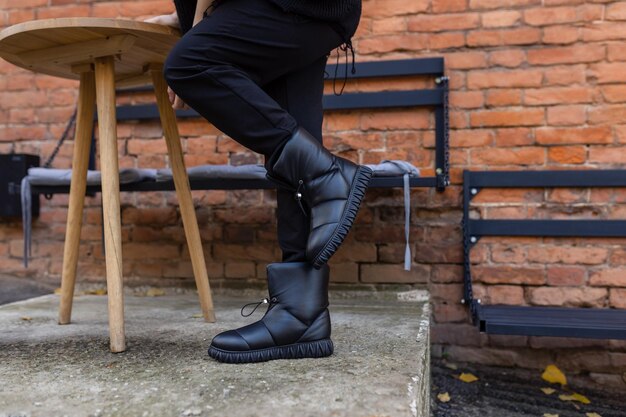Discover the Best Shoes for Senior Safety: A Guide to Footwear That Protects and Supports
As we age, maintaining independence and safety becomes a top priority. One often-overlooked aspect of this is footwear. The right shoes can be a game-changer in preventing falls, which are a leading cause of injury among seniors. With the right support, grip, and comfort, the perfect pair of shoes can ease mobility and boost confidence, allowing seniors to stride with certainty.
Why Proper Footwear Matters
Safety Footwear for older adults isn't just about comfort; it's about health and well-being. Shoes that prioritize safety can help to:
- Prevent slips and falls: Shoes with non-slip soles and a secure fit can drastically reduce the risk of tumbles.
- Reduce foot pain: Shoes designed with adequate cushioning and arch support can alleviate conditions like arthritis and plantar fasciitis.
- Enhance stability: Proper fit and supportive designs aid in maintaining balance.
Key Features of Safe Senior Footwear
When selecting shoes, seniors should look for these essential features:
Non-Slip Soles
Opt for shoes with rubber or textured soles designed to grip various surfaces. This prevents slipping, especially in inclement weather or wet environments.
Easy Fastening
Velcro straps or elastic laces provide ease of use, particularly for those with arthritis or diminished hand strength. This ensures a snug fit without the hassle of traditional laces.
Supportive Insoles
Insoles with cushioning and arch support are crucial. They provide stability and comfort, reducing foot strain. Some shoes even offer customizable insoles for tailored support.
Lightweight Materials
Lightweight shoes reduce the energy needed to walk, which can be beneficial for seniors experiencing fatigue. Look for shoes made of breathable materials to keep feet cool and comfortable.
Ample Toe Room
Shoes should accommodate natural toe splay. A spacious toe box prevents issues such as blisters and calluses, maintaining foot health.
Shopping Tips for Seniors
When on the quest for the ideal pair of shoes, seniors should:
- Shop later in the day: Feet can swell throughout the day, so shopping when feet are at their largest ensures a proper fit.
- Try before you buy: Walking around the store can help pinpoint any discomfort or fitting issues immediately.
- Consult a professional: A podiatrist can recommend styles and brands that cater to specific foot conditions or needs.
Integrating Financial Assistance and Health Support
It’s worth noting that quality, supportive footwear can sometimes come with a hefty price tag. Fortunately, there are ways to manage these costs:
- Many Medicare Advantage Plans and supplemental insurance options may cover a portion of the cost for therapeutic shoes, especially if prescribed by a healthcare provider.
- State-run programs sometimes offer financial aid or discounts for essential footwear and orthotics.
- Additionally, nonprofit organizations are often a resource for seniors in need of assistance covering medical and mobility expenses.
Exploring Broader Support Options
Footwear is just one aspect of maintaining mobility and independence. Seniors and their caregivers might also benefit from exploring broader healthcare and financial support options to ease the burden of essential expenses.
- Medicaid: Offers different health benefits and may cover essential items like medical equipment.
- Supplemental Security Income (SSI): For low-income seniors, SSI may offer funds that help cover daily living expenses.
- Veteran’s Benefits: Veterans may have extra avenues for support through the Veterans Administration.
Ultimately, choosing the right pair of shoes is pivotal for maintaining a quality of life and safeguarding mobility for seniors. By prioritizing features that enhance safety and comfort, seniors can take confident steps forward.
Financial and Support Resources for Seniors
- 💰 Medicare Advantage Plans: Coverage for therapeutic shoes and inserts
- 🌟 Medicaid: State-specific healthcare and equipment coverage
- ⚖️ Supplemental Security Income (SSI): Financial aid for basic needs
- 🏥 Veteran’s Benefits: Specialty support for healthcare and mobility aids
- 📞 Local Health Departments: Discounts and programs for senior essentials

- Dental Care Services
- Understanding Prescription Drug Coverage For Seniors
- Navigating Health Insurance Plans Tailored For Seniors
- Understanding The Role Of Primary Care Physicians Specializing In Geriatrics
- Comprehensive Guide To Maintenance Services For Seniors: From Lawn Care To Home Repair
- Navigating The World Of Housekeeping Services For Seniors
- An Expansive Guide To Home Modification Services For Seniors: Starting With Grab Bars And Beyond
- Understanding Respite Care Facilities For Seniors
- Navigating Assisted Living Facilities: A Comprehensive Guide For Seniors
- Your Ultimate Guide To Retirement Communities For Seniors